This site uses only a few technical cookies necessary for its operation. By continuing to browse, you accept their use.
To find out more...
To find out more...
Different kinds of pastry and dough
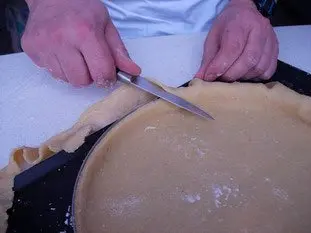
When cooking in general, and particularly in baking, we can make and use many different kinds of pastry and dough. All built on the same "base": flour - a powder to which we add fat, liquid or both to produce the dough which is then cooked.
Last modified on: November 6th 2012
Different kinds of pastry and dough
Here is a brief overview of these different doughs.
[Translator's note: in French, all doughs, pastries, batters and pasta are covered by just one word: “pâtes” , a feature of the original article that has been somewhat lost in this English version!]
Shortcrust pastry (pâte brisée) is the most basic pastry, used for sweet or savoury tarts (it contains little or no sugar). The French version consists of around 50% flour and 50% butter and eggs. The British version is plainer: without eggs and traditionally made with lard (these days, this is more usually a white vegetable fat, possibly with some butter).
This is the pastry of our grandmothers, particularly my own, Jeanne, who made tarts for me when I was a nipper with apples from her orchard – a memory that still moves me.
Sweetcrust pastry
Sweetcrust pastry (pâte sablée) is the pastry for sweet tarts. This is similar to shortcrust pastry, but with 15% sugar added, sometimes also (a great improvement!) with 15% ground almonds. It is fragile and crumbly, delicious on its own, so can be used just as it is to make biscuits.
Choux pastry (pâte à choux) is the famous French dough used for éclairs, Saint-Honoré and profiteroles. It starts as a butter+water+milk+flour mixture, called “panade” in French, into which eggs are then incorporated. During cooking, the water contained in the dough turns to steam to form bubbles. This is trapped by the light crust forming on the outside, causing the choux pastry to puff up.
Puff or flaky pastry (pâte feuilletée) is used for thin tart bases, pies, pasties, turnovers, mille-feuilles. This is a more technically involved pastry, consisting of a basic dough (the "détrempe" in French,) which is like a shortcrust pastry made with more water. This is rolled out and wrapped around a slab of butter, then folded and re-rolled a number of times to produce alternate layers of butter trapped between layers of dough.
During cooking, flaky layers form within the dough. The butter melts and the water turns to steam, so creating the puff pastry's characteristic light open texture.
Brioche dough is the dough used for brioches, Kouglof and certain types of bread. The name covers rich doughs, made with yeast, which need time to rise. Brioche dough is enriched with butter and eggs and is best handled cold (the butter keeps it firm), but should then be left in a warm place to rise.
Croissant dough is a flaky raised dough used to make croissants and "pains au chocolat". It is like a sweetened cross between a simple yeast-raised dough and puff pastry. The dough is rolled with butter to create layers and is then left to rise, creating a very light texture. The downside is that it is technically involved and requires a great deal of work.
The dough for fresh pasta is definitely the simplest of all to make: a mixture of flour, eggs and a little salt (a proportion of 1 egg to 100g flour). This dough is designed to be poached, i.e. cooked in boiling water for around 3 minutes.
[Translator's note: in French, all doughs, pastries, batters and pasta are covered by just one word: “pâtes” , a feature of the original article that has been somewhat lost in this English version!]
Shortcrust pastry
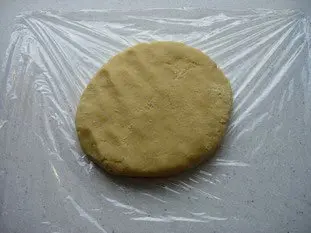
Shortcrust pastry (pâte brisée) is the most basic pastry, used for sweet or savoury tarts (it contains little or no sugar). The French version consists of around 50% flour and 50% butter and eggs. The British version is plainer: without eggs and traditionally made with lard (these days, this is more usually a white vegetable fat, possibly with some butter).
This is the pastry of our grandmothers, particularly my own, Jeanne, who made tarts for me when I was a nipper with apples from her orchard – a memory that still moves me.
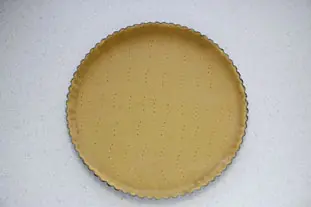
Sweetcrust pastry (pâte sablée) is the pastry for sweet tarts. This is similar to shortcrust pastry, but with 15% sugar added, sometimes also (a great improvement!) with 15% ground almonds. It is fragile and crumbly, delicious on its own, so can be used just as it is to make biscuits.
Choux pastry
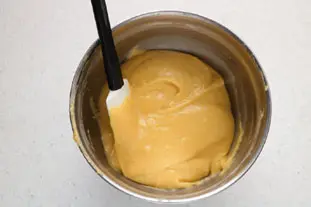
Choux pastry (pâte à choux) is the famous French dough used for éclairs, Saint-Honoré and profiteroles. It starts as a butter+water+milk+flour mixture, called “panade” in French, into which eggs are then incorporated. During cooking, the water contained in the dough turns to steam to form bubbles. This is trapped by the light crust forming on the outside, causing the choux pastry to puff up.
Puff or flaky pastry
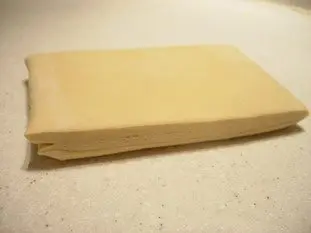
Puff or flaky pastry (pâte feuilletée) is used for thin tart bases, pies, pasties, turnovers, mille-feuilles. This is a more technically involved pastry, consisting of a basic dough (the "détrempe" in French,) which is like a shortcrust pastry made with more water. This is rolled out and wrapped around a slab of butter, then folded and re-rolled a number of times to produce alternate layers of butter trapped between layers of dough.
During cooking, flaky layers form within the dough. The butter melts and the water turns to steam, so creating the puff pastry's characteristic light open texture.
Brioche dough
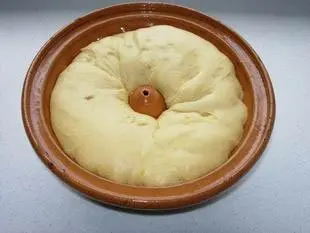
Brioche dough is the dough used for brioches, Kouglof and certain types of bread. The name covers rich doughs, made with yeast, which need time to rise. Brioche dough is enriched with butter and eggs and is best handled cold (the butter keeps it firm), but should then be left in a warm place to rise.
Croissant dough
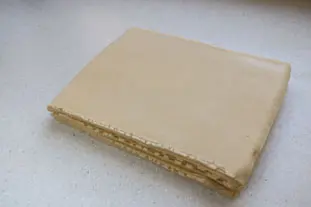
Croissant dough is a flaky raised dough used to make croissants and "pains au chocolat". It is like a sweetened cross between a simple yeast-raised dough and puff pastry. The dough is rolled with butter to create layers and is then left to rise, creating a very light texture. The downside is that it is technically involved and requires a great deal of work.
Fresh pasta dough (for lasagne, spaghetti, etc.)
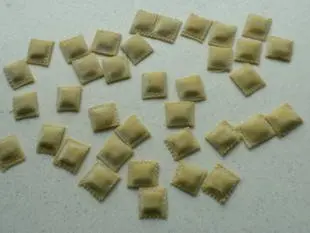
The dough for fresh pasta is definitely the simplest of all to make: a mixture of flour, eggs and a little salt (a proportion of 1 egg to 100g flour). This dough is designed to be poached, i.e. cooked in boiling water for around 3 minutes.
Lasts posts
Butter vs. grease
We often read in a recipe where a pastry is put into a mould that, just before pouring, the mould should be buttered or greased. But what's the difference between these 2 terms?December 1st 20256595
Getting out of the fridge early
Very often when you're cooking, you need to take food or preparations out of the fridge, to use them in the recipe in progress. There's nothing tricky about this: you just take them out of the fridge and use them, usually immediately, in the recipe. But is this really a good method?November 24th 20259555
Who's making the croissants?
When you look at a bakery from the outside, you naturally think that in the bakery, the bakers make the bread, and in the laboratory, the pastry chefs make the cakes. It's very often like that, with each of these professions having quite different ways of working, but sometimes there's also one...November 23th 2025863
Oven height
When we put a dish or cake in the oven, we naturally tend to put it on the middle shelf, and that's what we usually do. But in some cases, this position and height can be a little tricky, so let's find out why.October 8th 20252,4455
The importance of sieving
In recipes that use a fine powder (flour, powdered sugar, etc.), you'll often see the advice to sift before using it. To sift is to pass the powder in question through a sieve (a very fine strainer) before incorporating it into your recipe. It's often advice, but is it really useful?September 3rd 20257,3363
Other pages you may also like
The proper use of a dusting machine
Let's take a look at a simple gesture, the sprinkling, that is to say to distribute a fine powder (icing sugar, sugar, flour,...) on a surface. If you have to sprinkle something, you may use a sprinkler or "poudrette" (in french) it is a very simple utensil, a box, with a lid pierced with holes...July 31th 201911 K4.6
Cooking time for pasta
What is as good and simple as pasta? Not much, I think, and it's so easy to prepare: boiling water, salted (or not, depending on your taste), a few minutes of boiling and it's ready. The only "difficulty", so to speak, is the respect of the cooking time and the risk of, unfortunately, overcooking...July 18th 201923 K4.6
How to break eggs properly?
It is a very common gesture in pastry, bakery and of course cooking: breaking eggs to incorporate them into a recipe. You have eggs (which professionals call "shell eggs" to differentiate them from liquid eggs in cartons or cans), and you must break them to incorporate the contents into your...June 26th 202115 K4.8
The golden-brown finish on puff pastry
Let's take a look at the tricky matter of producing puff pastry with an attractive, golden-brown finish. French pastry chefs call this "dorure" (literally, "gilding"). Behind this quirky term there lurks a real problem (and the solution): when using puff pastry (pâte feuilletée) for a pie, or...February 8th 201847 K 24.6
Should a sausage be pricked before cooking?
If you are using sausages in a recipe, you may have already asked yourself the question: Should you prick it before cooking it, or not? You will certainly find as many opinions "you should prick" as "you should not". Let's try to untangle all this.September 29th 201848 K4.1
Follow this page (as 2 people already do)
If you are interested in this page, you can "follow" it, by entering your email address here. You will then receive a notification immediately each time the page is modified or a new comment is added. Please note that you will need to confirm this following.
Note: We'll never share your e-mail address with anyone else.
Alternatively: you can subscribe to the mailing list of cooling-ez.com , you will receive a e-mail for each new recipe published on the site.










The 1 comment already posted on this page